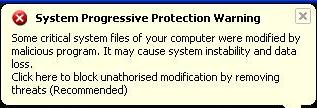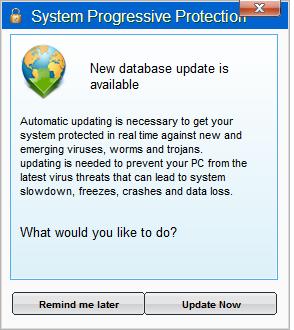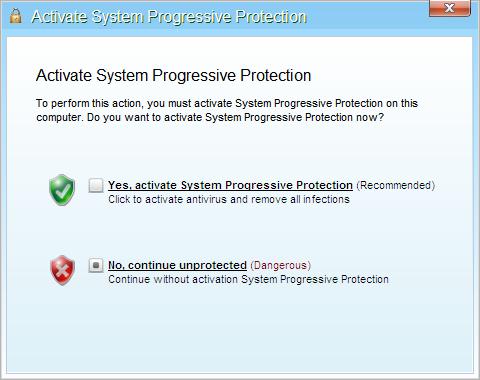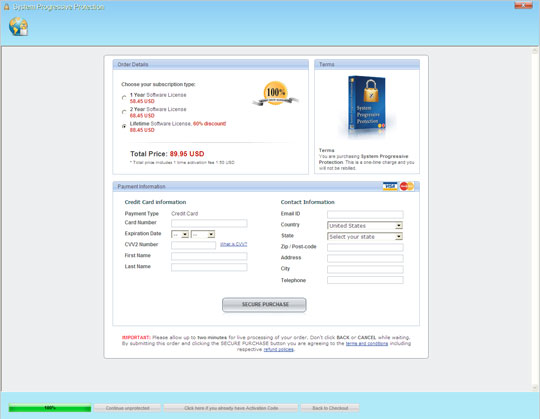TROJ_FAKEAV.DPW
Mal/FakeAV-KL (Sophos), Trojan horse FakeAV_r.PX (AVG), W32/FakeAV.SDA!tr (Fortinet), W32/FakeAlert.TW.gen!Eldorado (FProt), Trojan.Win32.FakeAV (Ikarus), Trojan.Win32.FakeAV.ovrs (Kaspersky), Rogue:Win32/Winwebsec (Microsoft), Trojan.FakeAV!gen96 (Norton)
Windows 2000, Windows XP, Windows Server 2003


Threat Type: Trojan
Destructiveness: No
Encrypted: No
In the wild: Yes
OVERVIEW
This Trojan arrives on a system as a file dropped by other malware or as a file downloaded unknowingly by users when visiting malicious sites.
It does not have any propagation routine.
It does not have any backdoor routine.
It does not have any downloading capability.
When users agree to buy the software, it connects to a certain URL. It displays a window where users can purchase this fake antivirus program.
TECHNICAL DETAILS
Arrival Details
This Trojan arrives on a system as a file dropped by other malware or as a file downloaded unknowingly by users when visiting malicious sites.
Installation
This Trojan drops the following files:
- %Start Menu%\Programs\System Progressive Protection\System Progressive Protection.lnk - detected as LNK_FAKEAV.SM2
- %All Users Profile%\Application Data\{random folder name}\{random file name}
- %All Users Profile%\Application Data\{random folder name}\{random file name}.ico
- %Desktop%\System Progressive Protection.lnk - detected as LNK_FAKEAV.SM2
(Note: %Start Menu% is the current user's Start Menu folder, which is usually C:\Windows\Start Menu or C:\Documents and Settings\{User name}\Start Menu on Windows 2000, XP, and Server 2003, or C:\Users\{user name}\AppData\Roaming\Microsoft\Windows\Start Menu on Windows Vista and 7.. %All Users Profile% is the All Users or Common profile folder, which is C:\Documents and Settings\All Users in Windows 2000, XP, and Server 2003, and C:\ProgramData in Windows Vista and 7.. %Desktop% is the current user's desktop, which is usually C:\Documents and Settings\{User Name}\Desktop on Windows 2000, XP, and Server 2003, or C:\Users\{user name}\Desktop on Windows Vista and 7.)
It drops the following copies of itself into the affected system:
- %All Users Profile%\Application Data\{random folder name}\{random file name}.exe
(Note: %All Users Profile% is the All Users or Common profile folder, which is C:\Documents and Settings\All Users in Windows 2000, XP, and Server 2003, and C:\ProgramData in Windows Vista and 7.)
It creates the following folders:
- %Start Menu%\Programs\System Progressive Protection
- %All Users Profile%\Application Data\{random folder name}
(Note: %Start Menu% is the current user's Start Menu folder, which is usually C:\Windows\Start Menu or C:\Documents and Settings\{User name}\Start Menu on Windows 2000, XP, and Server 2003, or C:\Users\{user name}\AppData\Roaming\Microsoft\Windows\Start Menu on Windows Vista and 7.. %All Users Profile% is the All Users or Common profile folder, which is C:\Documents and Settings\All Users in Windows 2000, XP, and Server 2003, and C:\ProgramData in Windows Vista and 7.)
Autostart Technique
This Trojan adds the following registry entries to enable its automatic execution at every system startup:
HKEY_CURRENT_USER\Software\Microsoft\
Windows\CurrentVersion\RunOnce
{random file name} = "%All Users Profile%\Application Data\{random folder name}\{random file name}.exe"
Propagation
This Trojan does not have any propagation routine.
Backdoor Routine
This Trojan does not have any backdoor routine.
Download Routine
This Trojan does not have any downloading capability.
Rogue Antivirus Routine
This Trojan displays the following fake alerts:
When users agree to buy the software, it connects to the following URL to continue the purchase:
- http://{BLOCKED}lingpay.com/p/?&lid=3070017&affid=60815&nid=DC0C021C&group=srs
The following window is displayed for users to purchase the fake antivirus program:
It displays the following window and pretends to scan the system:
NOTES:
This Trojan terminates processes except the following:
- alg.exe
- csrss.exe
- ctfmon.exe
- explorer.exe
- iexplore.exe
- lsass.exe
- services.exe
- smss.exe
- svchost.exe
- winlogon.exe
This Trojan connects to the following URL to let the remote user know that the installation was successful:
- http://{BLOCKED}.{BLOCKED}.225.41/api/stats/install/?ts=87fe138e
It connects to the following URL to get the URL where the affected user will connect to when opted to activate the fake antivirus software:
- http://{BLOCKED}.{BLOCKED}.225.41/api/urls/?ts=87fe138e
It may possibly connect to the following URLs for activation:
- http://{BLOCKED}illing.com/p/?
- http://{BLOCKED}rketpay.com/p/?
- http://{BLOCKED}tepors.com/p/?
- http://{BLOCKED}illing.com/p/?
- http://{BLOCKED}lingpay.com/p/?
- http://{BLOCKED}ybilling.com/p/?
- http://{BLOCKED}gshoper.com/p/?
- http://{BLOCKED}utbiz.com/p/?
- http://{BLOCKED}gpayer.com/p/?
- http://{BLOCKED}gshopes.com/p/?
- http://{BLOCKED}payment.com/p/?
- http://{BLOCKED}rchant.com/p/?
- http://{BLOCKED}s.{BLOCKED}support.info/?
It does not have rootkit capabilities.
It does not exploit any vulnerability.
SOLUTION
Step 1
Before doing any scans, Windows XP, Windows Vista, and Windows 7 users must disable System Restore to allow full scanning of their computers.
Step 3
Scan your computer with your Trend Micro product and note files detected as TROJ_FAKEAV.DPW
Step 4
Restart in Safe Mode
Step 5
Delete this registry value
Important: Editing the Windows Registry incorrectly can lead to irreversible system malfunction. Please do this step only if you know how or you can ask assistance from your system administrator. Else, check this Microsoft article first before modifying your computer's registry.
- In HKEY_CURRENT_USER\Software\Microsoft\Windows\CurrentVersion\RunOnce
- {random file name} = "%All Users Profile%\Application Data\{random folder name}\{random file name}.exe"
- {random file name} = "%All Users Profile%\Application Data\{random folder name}\{random file name}.exe"
Step 6
Search and delete these files
- %All Users Profile%\Application Data\{random folder name}\{random file name}
- %All Users Profile%\Application Data\{random folder name}\{random file name}.ico
Step 7
Search and delete these folders
- %Start Menu%\Programs\System Progressive Protection
- %All Users Profile%\Application Data\{random folder name}
Step 8
Search and delete the files detected as TROJ_FAKEAV.DPW
*Note: Some component files may be hidden. Please make sure you check the Search Hidden Files and Folders checkbox in the More advanced options option to include all hidden files and folders in the search result.
To stop the malware/grayware from running when certain files are opened:
For Windows 2000, Windows XP, and Windows Server 2003:
- Right-click Start then click Search....
- In the Named input box, type the name of the file that was detected earlier.
- In the Look In drop-down list, select My Computer then press Enter.
- Once located, select the file then press SHIFT+DELETE to delete it.
For Windows Vista and Windows 7:
- Click Start>Computer.
- In the Search Computer input box, type the name of the file detected earlier, and press Enter.
- Once located, select the file then press SHIFT+DELETE to delete it.
*Note: Read the following Microsoft page if these steps do not work on Windows 7.
Step 9
Restart in normal mode and scan your computer with your Trend Micro product for files detected as TROJ_FAKEAV.DPW. If the detected files have already been cleaned, deleted, or quarantined by your Trend Micro product, no further step is required. You may opt to simply delete the quarantined files. Please check this Knowledge Base page for more information.
Step 10
Scan your computer with your Trend Micro product to delete files detected as TROJ_FAKEAV.DPW. If the detected files have already been cleaned, deleted, or quarantined by your Trend Micro product, no further step is required. You may opt to simply delete the quarantined files. Please check this Knowledge Base page for more information.
Did this description help? Tell us how we did.









